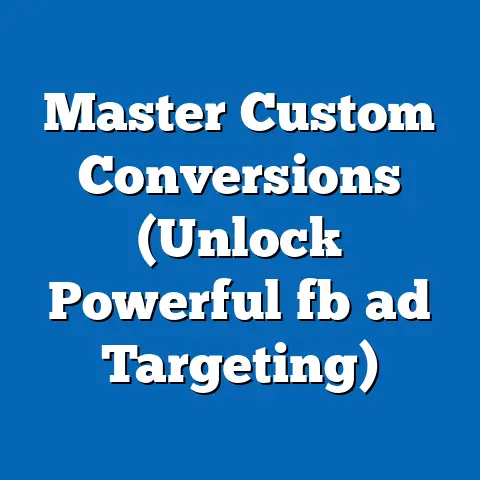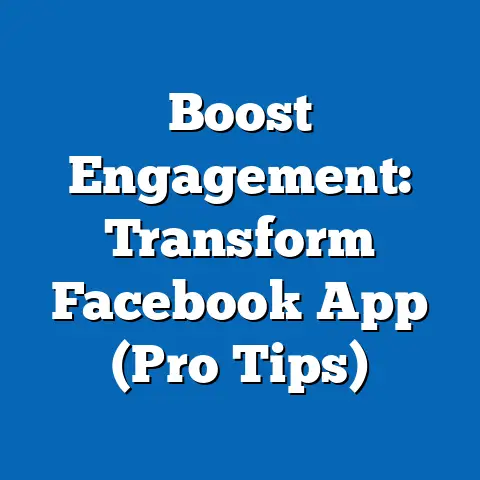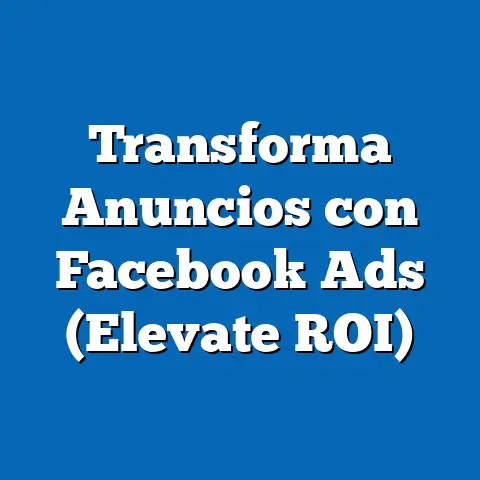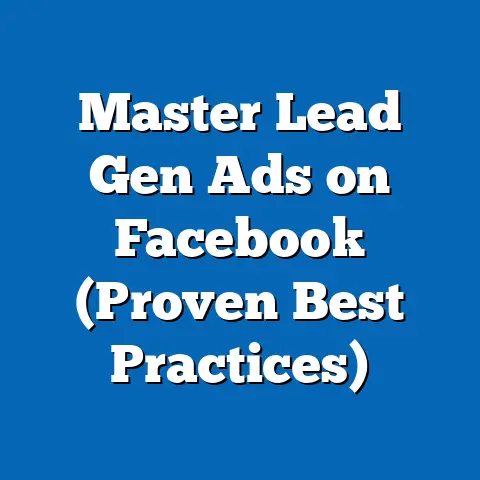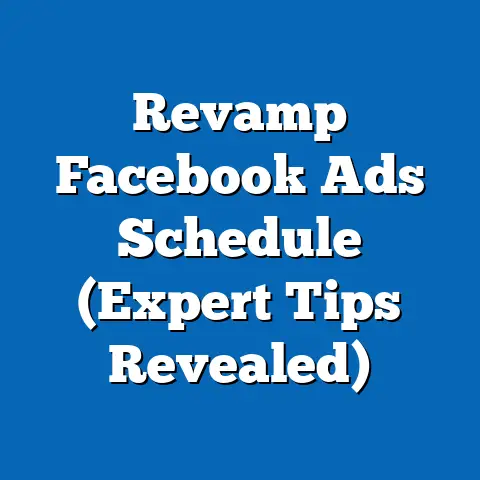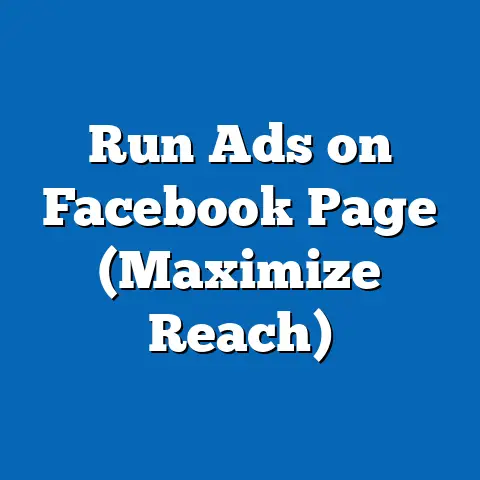Master Sales Objectives (Power Strategies for Facebook Ads)
I’ve always believed that marketing, at its core, is about building relationships. It’s not just about pushing products; it’s about connecting with people on an emotional level. Think of it like making a friend – you wouldn’t just walk up to someone and immediately ask them to buy something, would you? You’d start a conversation, find common ground, and build trust. That’s the essence of “warmth” in marketing.
In today’s digital landscape, where consumers are bombarded with countless ads every day, establishing this warmth is more critical than ever. It’s what makes your brand stand out from the noise, fosters genuine connections, and ultimately drives conversions. And when it comes to Facebook ads, mastering the art of creating warm, engaging content is essential for achieving your sales objectives.
I remember when I first started running Facebook ads, I focused solely on the technical aspects – targeting, bidding, and ad copy. My ads were okay, but they weren’t setting the world on fire. It wasn’t until I shifted my focus to building a connection with my audience, crafting ads that resonated with their emotions and values, that I started seeing real results. That’s when I realized the power of warmth.
But warmth alone isn’t enough. You need a clear direction, a goal to strive for. That’s where sales objectives come in. They’re the roadmap that guides your ad campaigns, ensuring that every effort is aligned with your overall business goals.
In this article, I’ll share with you the power strategies I’ve learned over the years for mastering sales objectives in Facebook ads. We’ll explore how to craft ads that not only capture attention but also build genuine connections with your audience, ultimately driving sales and achieving your business goals.
Understanding Sales Objectives
Sales objectives are the specific, measurable goals you want to achieve with your advertising campaigns. They’re the compass that guides your strategy, ensuring that every ad, every targeting option, and every creative element is working towards a common purpose. Without clear sales objectives, your Facebook ads are like a ship without a rudder, drifting aimlessly in the vast ocean of the internet.
Why are sales objectives so crucial? Well, for starters, they provide a framework for measuring success. How can you know if your ad campaign is working if you don’t have a clear idea of what you’re trying to achieve? Sales objectives allow you to track your progress, identify what’s working, and make adjustments as needed.
Here are some common types of sales objectives you might consider for your Facebook ad campaigns:
- Increasing Brand Awareness: This objective focuses on reaching a broad audience and introducing them to your brand. The goal is to make people familiar with your name, logo, and values.
- Generating Leads: This objective aims to collect contact information from potential customers who are interested in your products or services. This could involve offering a free ebook, a discount code, or a consultation in exchange for their email address.
- Driving Sales: This objective focuses on directly increasing revenue by encouraging people to purchase your products or services. This could involve promoting specific products, offering limited-time deals, or showcasing customer testimonials.
- Customer Retention: This objective aims to keep existing customers engaged with your brand and encourage them to make repeat purchases. This could involve offering loyalty rewards, sending personalized emails, or promoting new products specifically tailored to their interests.
According to a recent study by HubSpot, businesses with well-defined sales objectives are 42% more likely to achieve their revenue targets. That’s a significant difference!
I remember working with a client who was struggling to generate sales through their Facebook ads. After digging deeper, I realized they didn’t have a clear sales objective. They were simply running ads with the hope of attracting customers, without any specific goal in mind. We worked together to define a clear sales objective – to increase online sales by 20% in the next quarter – and then tailored their ad campaigns to achieve that goal. The results were remarkable. Within just a few weeks, they saw a significant increase in sales, proving the power of having well-defined sales objectives.
Key Takeaway: Define your sales objectives before you even start creating your Facebook ads. This will provide a clear direction for your campaigns and allow you to measure your success effectively.
Crafting Your Facebook Ads with Sales Objectives in Mind
Once you’ve defined your sales objectives, the next step is to craft Facebook ads that are specifically designed to achieve those goals. This involves understanding your target audience, crafting compelling ad copy, selecting engaging visuals, and designing captivating calls-to-action.
Knowing Your Target Audience:
Before you start writing your ad copy or selecting your visuals, you need to understand who you’re trying to reach. Who are your ideal customers? What are their interests, needs, and pain points? The more you know about your target audience, the better you can tailor your ads to resonate with them.
Facebook offers a wealth of targeting options, allowing you to reach specific demographics, interests, behaviors, and even custom audiences based on your existing customer data. Take advantage of these options to ensure that your ads are being seen by the people who are most likely to be interested in your products or services.
Crafting Compelling Ad Copy:
Your ad copy is your opportunity to grab attention, communicate your message, and persuade people to take action. It should be clear, concise, and relevant to your target audience. Highlight the benefits of your products or services, address their pain points, and create a sense of urgency.
I often use the AIDA framework when writing ad copy:
- Attention: Grab the reader’s attention with a captivating headline or image.
- Interest: Generate interest by highlighting the benefits of your product or service.
- Desire: Create a desire for your product or service by showcasing its value and addressing their pain points.
- Action: Prompt the reader to take action with a clear and compelling call-to-action.
Selecting Engaging Visuals:
Visuals are a crucial element of your Facebook ads. They’re the first thing people see, and they can make or break your campaign. Choose high-quality images or videos that are relevant to your target audience and your sales objectives.
According to a study by HubSpot, visuals increase people’s willingness to read your content by 80%. That’s a huge impact!
Designing Captivating Calls-to-Action:
Your call-to-action (CTA) is the final nudge that encourages people to take the desired action. It should be clear, concise, and compelling. Use action-oriented language that tells people exactly what you want them to do.
Some common CTAs include:
- “Shop Now”
- “Learn More”
- “Sign Up”
- “Get Started”
- “Download Now”
Utilizing Facebook’s Ad Formats:
Facebook offers a variety of ad formats, each with its own strengths and weaknesses. Choose the ad format that best aligns with your sales objectives and your target audience.
- Image Ads: Simple and effective for showcasing your products or services.
- Video Ads: Engaging and dynamic for telling your brand story.
- Carousel Ads: Allows you to showcase multiple products or services in a single ad.
- Collection Ads: Combines images and videos to create a visually immersive shopping experience.
- Lead Ads: Allows you to collect contact information from potential customers directly within Facebook.
I’ve found that experimenting with different ad formats is key to finding what works best for your business. Don’t be afraid to try new things and see what resonates with your audience.
Key Takeaway: Craft your Facebook ads with your sales objectives in mind. Understand your target audience, write compelling ad copy, select engaging visuals, and design captivating calls-to-action. Experiment with different ad formats to find what works best for your business.
Power Strategies for Maximizing Sales Objectives
Now that you understand the importance of sales objectives and how to craft Facebook ads that align with them, let’s dive into some specific power strategies you can use to maximize your results.
-
Segmenting Your Audience:
Audience segmentation involves dividing your target audience into smaller groups based on specific characteristics, such as demographics, interests, behaviors, or purchase history. This allows you to create more personalized ad experiences that resonate with each segment, leading to higher conversion rates.
For example, if you’re selling clothing, you might segment your audience by gender, age, and style preferences. You could then create different ads for each segment, showcasing products that are most relevant to their interests.
I’ve seen firsthand how effective audience segmentation can be. I worked with a client who was selling a variety of skincare products. They were running generic ads that targeted a broad audience, and their results were mediocre. We decided to segment their audience based on skin type (oily, dry, sensitive) and create different ads for each segment, showcasing products that were specifically designed for their skin type. The results were incredible. They saw a significant increase in sales, and their return on ad spend (ROAS) skyrocketed.
-
Retargeting Campaigns:
Retargeting campaigns involve showing ads to people who have previously interacted with your brand, such as visiting your website, viewing a product page, or adding an item to their cart. This is a powerful strategy for re-engaging users who have shown interest in your products or services, reminding them of what they were looking at, and encouraging them to complete a purchase.
According to a study by Criteo, retargeting ads have a 10x higher click-through rate (CTR) than regular display ads. That’s a massive difference!
I always recommend that my clients implement retargeting campaigns. It’s one of the most effective ways to drive sales and increase customer loyalty.
-
A/B Testing:
A/B testing involves creating two or more versions of your ad (e.g., different headlines, images, or CTAs) and showing them to a random sample of your target audience. This allows you to identify which version performs best and optimize your ads accordingly.
A/B testing is an essential part of any successful Facebook ad campaign. It allows you to make data-driven decisions and continuously improve your results.
I use A/B testing all the time. I’ll test different headlines, images, and CTAs to see what resonates best with my audience. It’s a simple but powerful way to optimize your ads and maximize your ROI.
-
Leveraging Facebook Pixel:
The Facebook Pixel is a small piece of code that you can install on your website to track user behavior. This allows you to see what people are doing on your website after clicking on your Facebook ads, such as viewing product pages, adding items to their cart, or completing a purchase.
The Facebook Pixel is a valuable tool for optimizing your ads and better aligning them with your sales objectives. It allows you to track conversions, create custom audiences, and retarget users based on their website activity.
I always recommend that my clients install the Facebook Pixel on their website. It’s essential for tracking the effectiveness of your Facebook ads and making data-driven decisions.
-
Utilizing Lookalike Audiences:
Lookalike audiences allow you to expand your reach to new potential customers who exhibit similar behaviors and interests as your existing customers. This is a powerful strategy for finding new people who are likely to be interested in your products or services.
Facebook uses its vast database of user data to identify people who share similar characteristics with your existing customers. This allows you to target a highly relevant audience, increasing your chances of driving sales and achieving your sales objectives.
I’ve had great success with lookalike audiences. I’ve used them to find new customers for a variety of businesses, and the results have always been impressive.
Segmenting Your Audience:
Audience segmentation involves dividing your target audience into smaller groups based on specific characteristics, such as demographics, interests, behaviors, or purchase history. This allows you to create more personalized ad experiences that resonate with each segment, leading to higher conversion rates.
For example, if you’re selling clothing, you might segment your audience by gender, age, and style preferences. You could then create different ads for each segment, showcasing products that are most relevant to their interests.
I’ve seen firsthand how effective audience segmentation can be. I worked with a client who was selling a variety of skincare products. They were running generic ads that targeted a broad audience, and their results were mediocre. We decided to segment their audience based on skin type (oily, dry, sensitive) and create different ads for each segment, showcasing products that were specifically designed for their skin type. The results were incredible. They saw a significant increase in sales, and their return on ad spend (ROAS) skyrocketed.
Retargeting Campaigns:
Retargeting campaigns involve showing ads to people who have previously interacted with your brand, such as visiting your website, viewing a product page, or adding an item to their cart. This is a powerful strategy for re-engaging users who have shown interest in your products or services, reminding them of what they were looking at, and encouraging them to complete a purchase.
According to a study by Criteo, retargeting ads have a 10x higher click-through rate (CTR) than regular display ads. That’s a massive difference!
I always recommend that my clients implement retargeting campaigns. It’s one of the most effective ways to drive sales and increase customer loyalty.
A/B Testing:
A/B testing involves creating two or more versions of your ad (e.g., different headlines, images, or CTAs) and showing them to a random sample of your target audience. This allows you to identify which version performs best and optimize your ads accordingly.
A/B testing is an essential part of any successful Facebook ad campaign. It allows you to make data-driven decisions and continuously improve your results.
I use A/B testing all the time. I’ll test different headlines, images, and CTAs to see what resonates best with my audience. It’s a simple but powerful way to optimize your ads and maximize your ROI.
Leveraging Facebook Pixel:
The Facebook Pixel is a small piece of code that you can install on your website to track user behavior. This allows you to see what people are doing on your website after clicking on your Facebook ads, such as viewing product pages, adding items to their cart, or completing a purchase.
The Facebook Pixel is a valuable tool for optimizing your ads and better aligning them with your sales objectives. It allows you to track conversions, create custom audiences, and retarget users based on their website activity.
I always recommend that my clients install the Facebook Pixel on their website. It’s essential for tracking the effectiveness of your Facebook ads and making data-driven decisions.
Utilizing Lookalike Audiences:
Lookalike audiences allow you to expand your reach to new potential customers who exhibit similar behaviors and interests as your existing customers. This is a powerful strategy for finding new people who are likely to be interested in your products or services.
Facebook uses its vast database of user data to identify people who share similar characteristics with your existing customers. This allows you to target a highly relevant audience, increasing your chances of driving sales and achieving your sales objectives.
I’ve had great success with lookalike audiences. I’ve used them to find new customers for a variety of businesses, and the results have always been impressive.
Key Takeaway: Implement these power strategies to maximize your sales objectives. Segment your audience, run retargeting campaigns, A/B test your ads, leverage the Facebook Pixel, and utilize lookalike audiences.
Measuring Success and Adjusting Strategies
Measuring the success of your Facebook ad campaigns is crucial for understanding what’s working and what’s not. It allows you to make data-driven decisions and continuously improve your results.
The key is to track the right metrics. These are known as Key Performance Indicators (KPIs). Some of the most important KPIs to track for Facebook ad campaigns include:
- Conversion Rate: The percentage of people who take the desired action after clicking on your ad (e.g., making a purchase, signing up for a newsletter).
- Return on Ad Spend (ROAS): The amount of revenue generated for every dollar spent on advertising.
- Customer Acquisition Cost (CAC): The cost of acquiring a new customer through your Facebook ad campaigns.
- Click-Through Rate (CTR): The percentage of people who click on your ad after seeing it.
- Cost Per Click (CPC): The average cost you pay for each click on your ad.
- Reach: The number of unique people who saw your ad.
- Impressions: The number of times your ad was displayed.
Facebook provides a wealth of data in its Insights and Ads Manager platforms. Take advantage of these tools to track your KPIs and analyze your campaign performance.
I recommend setting up a dashboard to track your KPIs on a regular basis. This will allow you to quickly identify any trends or issues and make adjustments as needed.
The beauty of Facebook advertising is that it’s an iterative process. You can continuously refine your ad strategies based on performance data, ensuring that you’re always moving closer to your sales objectives.
For example, if you notice that your conversion rate is low, you might try A/B testing different headlines or CTAs to see if you can improve it. If you notice that your CAC is high, you might try targeting a different audience or adjusting your bidding strategy.
Don’t be afraid to experiment and try new things. The key is to be adaptable and willing to adjust your strategies based on the data.
Key Takeaway: Measure the success of your Facebook ad campaigns against your established sales objectives. Track your KPIs, analyze your data, and adjust your strategies accordingly. Be adaptable and willing to experiment.
Conclusion
Mastering sales objectives in Facebook advertising is essential for achieving your business goals. It’s not just about creating pretty ads; it’s about building genuine connections with your audience and driving meaningful results.
Remember, warmth is key. Create ads that resonate with your audience’s emotions and values. Show them that you understand their needs and pain points. Build trust and establish a genuine connection.
Combine warmth with strategic planning and execution. Define your sales objectives, craft compelling ad copy, select engaging visuals, and design captivating calls-to-action. Implement the power strategies we discussed, such as audience segmentation, retargeting campaigns, A/B testing, leveraging the Facebook Pixel, and utilizing lookalike audiences.
And don’t forget to measure your success and adjust your strategies accordingly. Track your KPIs, analyze your data, and be adaptable and willing to experiment.
By mastering these principles, you can elevate your Facebook ad efforts and achieve your sales goals. The potential for growth and success through effective Facebook advertising is immense. So, embrace the power of warmth, embrace strategic planning, and embrace the journey to mastering your sales objectives. Your success awaits!

